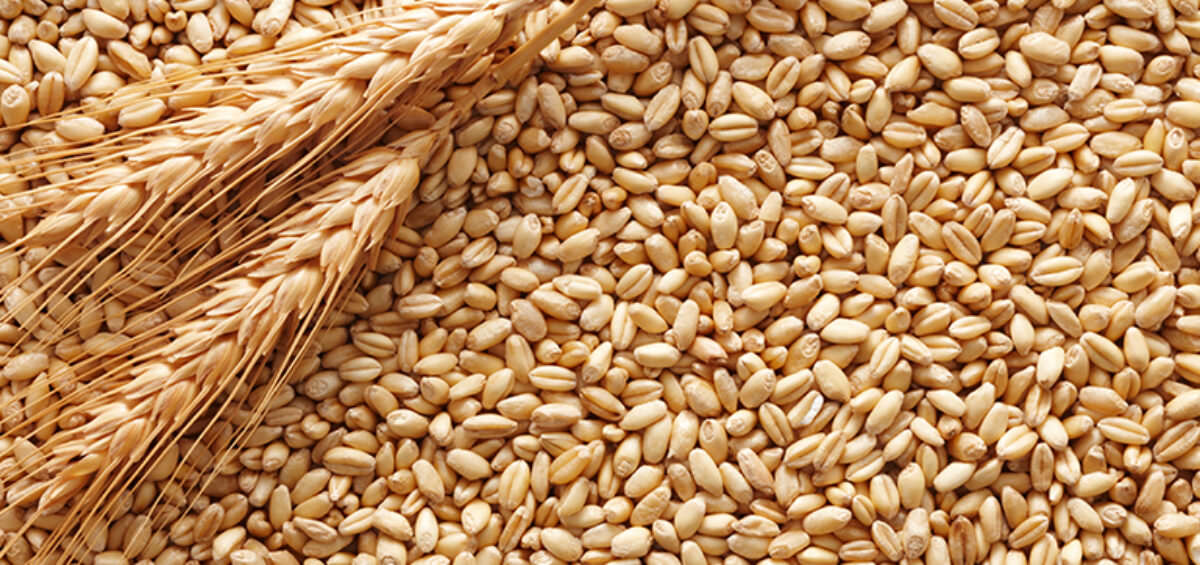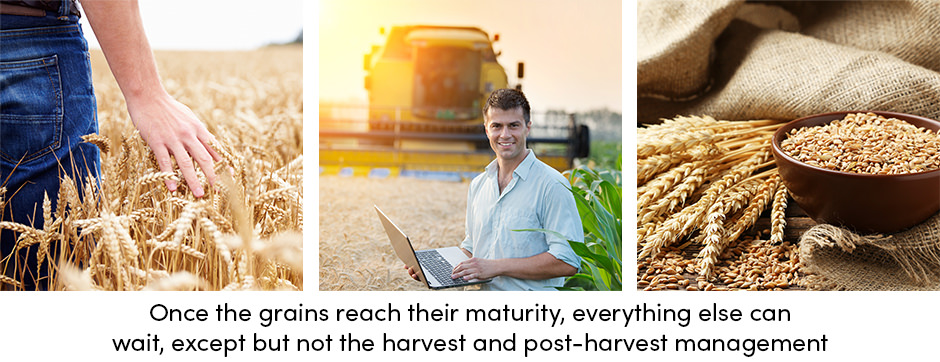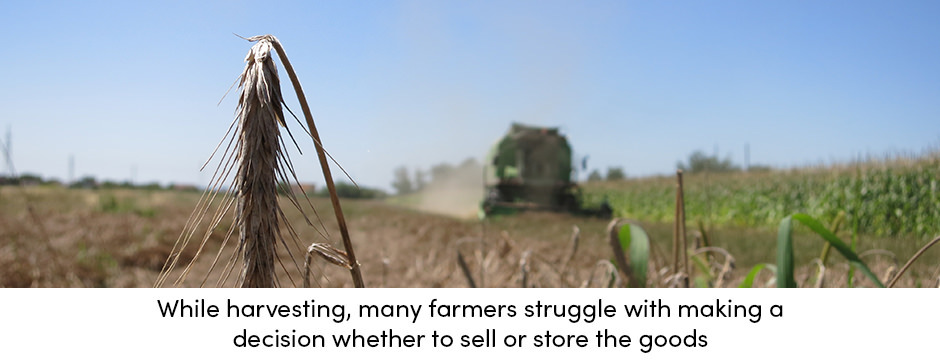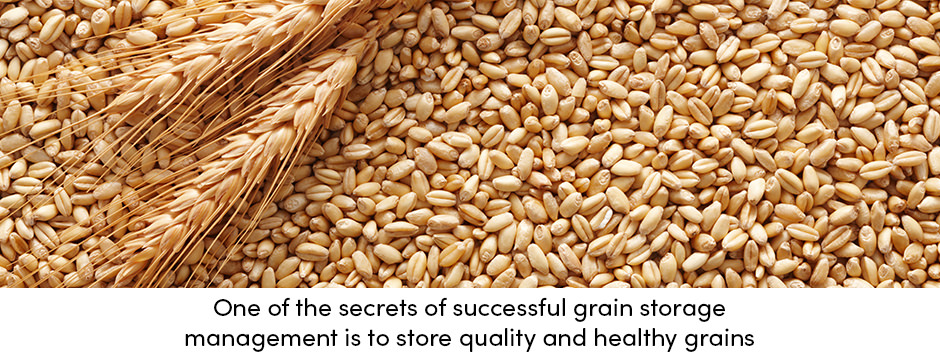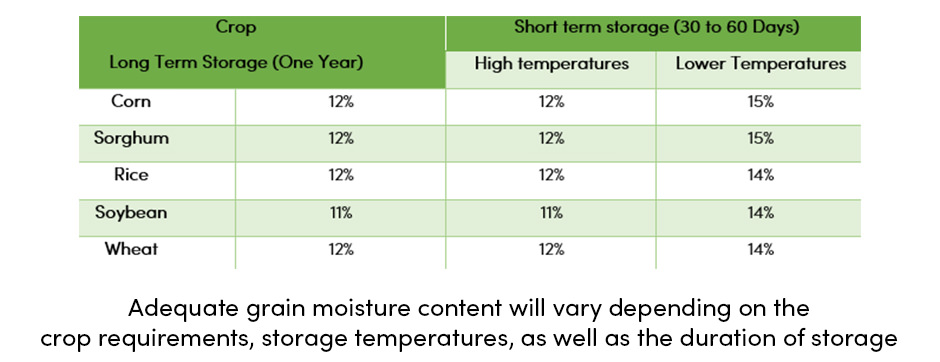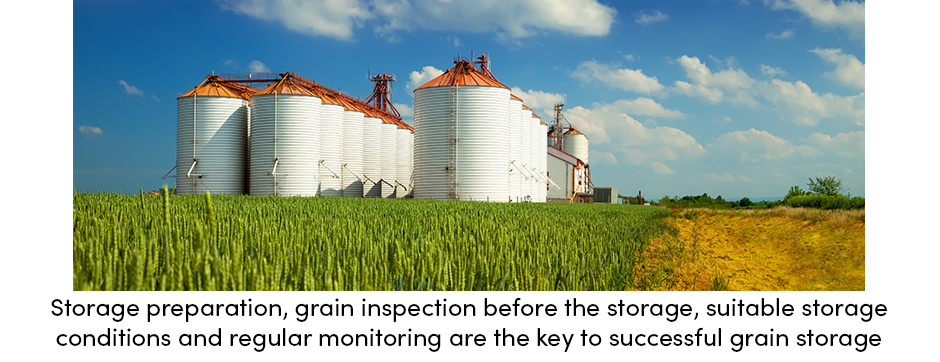There are numerous varieties of crops that are grown for human consumption throughout the world. Still, grains such as wheat, maize, rice, sorghum, and barley play a major role in the human diet and represent the main source of income for the vast majority of farmers.
The demand for grains is stable throughout the year. However, grain production is seasonal, and in many regions, there is only one harvest per year. Therefore, once the grains reach their maturity, everything else can wait, except the harvest and post-harvest management.
The Decision That Stands Between Success and Failure
From the moment that grains are ready for harvest, what happens next will determine a farmer’s success or failure. In other words, farmers are faced with one big decision: whether to sell the grains as soon as possible or to store them and wait for the best market price.
In general, grain prices are seasonally lower in the time of harvest. Though, it’s not surprising that many farmers prefer to store their crops and wait for the best market price. But still, storage has its own risks as well. Suitable storage facilities bring additional costs, and if not managed properly, grains may soon deteoriate and lose their quality. Besides that, the market price is always unpredictable and the longer the crops stay in storage, the greater the risk.
Practices That Will Determine the Success of Grain Storage
Many farmers wonder how to improve storage management and preserve the yield. Storing the grains into permanent structures, such as silos or bins instead of temporary storages, is definitely a good beginning. Now, let’s focus on practices that will ensure proper grain storage:
1. Preparation of grain silos or bins
The first step before storing the grains into the silos or bins is to make sure that the storage is ready for new grains. In this purpose, farmers have to remove any grain left from the previous harvest and thoroughly clean their silos or bins. In case of insect pest or disease infestation from the previous season, best practices recommend spraying with suitable chemicals and cleaning the storage in detail.
2. Storing quality and healthy grains
It’s extremely important to check harvested grains for the presence of insect pests or diseases. Proper sanitation practices will prevent the occurrence of pests. However, in case an infection still occurs, best practices recommend treating the grains with appropriate pesticides in order to prevent the infection from spreading onto healthy grains.
3. Drying, aeration, and temperature control
The moisture content is one of the burning factors that will determine how long the grain can remain in storage without loosing its quality. Therefore, grains should be dryed additionaly, in order to reach the proper moisture content, depending on the requirements and production purpose of each crop, as well as the duration of storage. Another important aspect to consider is the temperature of stored grains and the storage itself. It’s extremely important to monitor grain temperature and to keep grains cool and dry.
Regular aeration will help maintain a fairly uniform grain temperature throughout the storage. Generally, high grain moisture and high temperatures are favorable for insect or fungal infections, and grain detoriation. However, grains can be stored with a higher moisture content if the temperatures are lower.
4. Regular monitoring
Regular monitoring of stored grains and storage conditions is just as important as the establishment for achieving adequate storage conditions. According to this, every successful farmer will check silos or bins on a regular basis. Consequently, a farmer will be able to detect any changes in temperature or the presence of insect pest or disease infestation and handle it on time.
By following the aforementioned practices, farmers will minimize potential storage risks and preserve the quality of their grains until the market price is high enough to sell the goods. Regardless of how the storage seems complicated and hard to manage, farmers just have to take into consideration various demands their crops require and carefully manage each storage practice.
Text sources: Canadian Grain Commission || Alberta.ca
Image sources: University of Arkansas
